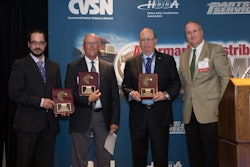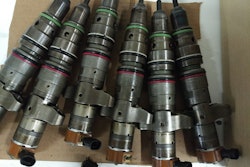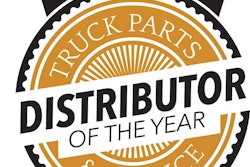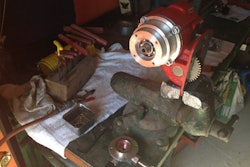When the associations of the independent aftermarket and the Truck and Engine Manufacturers Association (EMA) agreed to a national commercial vehicle Right to Repair Memorandum of Understanding (MOU) in 2015, one of the most encouraging features of the agreement was its complaint resolution process.
The Right to Repair MOU was a huge win for the independent aftermarket because of the concessions made by EMA members to make diagnostic and technical repair information available for purchase to all aftermarket service providers.
With clear deadlines for when the information would be made available and instructions promised for how service providers could access that information, aftermarket expectations in 2015 were that at some point in the future (say December 2018, for example), independent service providers would finally be able to start and complete advanced vehicle repairs without requiring any dealer assistance. This meant no more turning work away because you didn’t have the correct tools to complete a job or taking a truck down the block to a dealer to reset an engine code. The MOU was going to make those occurrences a thing of the past.
But that wasn’t all. The MOU also provided an incredible fallback tool.
Under the terms of the MOU, all independent service providers were granted (and still have) the ability to submit a claim — called a Service Information Request (SIR) — at any time to the National Automotive Service Task Force (NASTF) if they believe an EMA member was failing to comply with the terms of the MOU agreement. As a third-party organization, NASTF would then bring this complaint to the manufacturer in question and negotiate with them on behalf of the independent aftermarket to find a resolution.
This was a big get at the time because it gave the aftermarket an avenue to stand up for itself.
Couldn’t access a wiring diagram you were promised? Submit an SIR. Couldn’t reflash an engine code with the diagnostic tool you bought? Submit an SIR. It was designed to be a quick and easy solution for service providers who were still having trouble accessing the repair information they pushed so hard to acquire.
It’s because the process seemed so easy that I’ve been surprised by the number of aftermarket service providers who’ve told me their quests to acquire service information for their techs hasn’t changed much or improved. That while some repairs are easier, much of the repair information the independent aftermarket was struggling to find five or 10 years ago remains as elusive as ever.
I find that incredibly frustrating, though I think I now know why. After a few weeks of research and conversations with those who participated in the heavy-duty MOU’s negotiation, it appears the SIR claims program is the independent aftermarket’s best defense against MOU enforcement — and absolutely no one is using it.
I’m not speaking hyperbolically here, either. EMA President Jed Mandel tells me he is not aware of any formal complaints regarding the MOU’s implementation and that the agreement’s complaint resolution process “has never been used.”
Never. Been. Used.
I want to say that’s unbelievable but we all know it isn’t. The medium- and heavy-duty OEM community has made available all the information it believes it is required to release under the MOU and while the aftermarket believes it is entitled to more, no one in the aftermarket community has stepped up and said anything. The aftermarket has stopped fighting.
Why?
Do you think the battle is unwinnable? Is the SIR submission process more cumbersome than running a truck down the road to reset a code? Were some independents stretching the truth when they told me little has changed.
I can’t answer those questions. I’m not in the service bay. I don’t know exactly what’s going on out there every day. But I do know the medium- and heavy-duty Right to Repair MOU was a landmark deal worth fighting for. Especially when the defensive mechanism is built right into the agreement.
To file a SIR, please go to www.nastf.org/filesir/.











